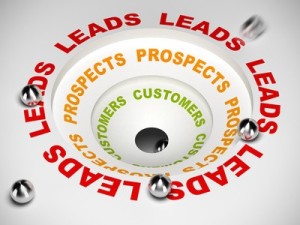Drip Nurturing: Prepare for Impact
The Importance of Drip Nurturing as a Part of Your Marketing Automation Strategy
In last week’s blog, we outlined Campaign Drips, and how they can help improve the reach and effectiveness of your marketing campaigns. Campaigns Drips are used to reach out to prospects that have yet to engage with your company. Automatically scheduled email sends are delivered with messaging that varies based on each user’s behavior with past emails. These campaigns help you getter a better understanding of the prospects you have yet to engage with, and drive awareness of your brand, products, and services to potential customers before the nurturing process begins.

Lightweight Marketing Automation software now lets businesses of any size take advantage of today’s cutting-edge lead nurturing techniques
This week, we’ll take a look at Drip Nurturing, and discuss how this process can guide leads that have already interacted with your brand through the entire sales funnel, from initial contact to all the way through closing. Once considered a strategy that could only be afforded by larger organizations, a lightweight version of this technology has recently emerged as a way to help businesses of any size overcome potential budget restraints, business complexities, or lack of resources – and begin moving towards a next-generation marketing solution.
A Drip Nurturing campaign is kicked off after a user takes an action with your company (downloads research, a free trial, or submits a request for information). At this point, the user is considered “un-nurtured lead”, and is automatically dropped into a segmentation bucket based on their displayed interests and set to begin receiving relevant emails. Thus, the nurturing process begins.
The Importance of Drip Nurturing
Drip nurturing guides prospects through the sales funnel by continuously sending relevant and useful content as a way to them interested and engaged as they transition from lead to customer. It’s an added level of engagement that shows potential customers that you’re genuinely here to help and inform them – not just trying to make a quick sale. This added level of engagement often results in huge conversion increases and revenue spikes. In fact, according to recent data, drip emails can increase click through rates by over 100%[1], and ultimately produce more than 50% additional purchase-ready customers[2].
[Tweet “Drip emails can increase click through rates by over 100%, and ultimately produce more than 50% additional purchase-ready customers.”]
The purpose of a drip nurture campaign is to cultivate a relationship with your contacts by routinely providing them with rich, relevant, and useful content. One of the beautiful things about campaigns of this nature is that they can automatically react and adjust to a lead’s interactions. For example, let’s say you send an article about to your lead about the best way to paint a house. If they open it, they are then sent new content in a week or so about, say, how to power wash a house before you paint it. But if they don’t open it, maybe the campaign waits a week before re-sending the initial email. Or maybe it sends a different piece of content, perhaps about vinyl siding or the best way to stain shingles.

Timing content delivery is a key component to drip nurturing. Nobody wants to be bombarded with email seconds after downloading an asset.
Eventually, your drip nurturing campaign will start identifying your most active recipients. You’ll start to see trends on who opens and engages with your emails. And when you find someone who just can’t get enough of your great content, it’s time to jump in with a sales offer. Those who remain less responsive will stay within the drip campaign and continue to receive content until they’re ripe for a discussion or offer.
Sending the right content at the right time is one of the most important aspects of the lead nurturing process. But it’s not as easy at it sounds, particularly from a resource perspective. Companies that leverage automated nurturing are often faced with an issue where they must engage with many different prospects at many different stages in the sales funnel. As you can imagine, this requires a tremendous amount of unique and varying content. This is why it’s so important to best to build a content creation and delivery strategy prior to embarking on a drip nurturing campaign.
Drip Nurturing with Boingnet
At Boingnet, we recently added a series of new and exciting features to the Drip Nurture functionality within our Lightweight Marketing Automation Software. Emails can now be configured to repeat until a stop condition is met, and a new set of triggers now allow you to let some leads skip a series of steps based on activity and behavior. For example, people who respond to a form could be bounced to the end of the campaign to be immediately hit with an offer, while people who don’t can continue through the stream of content. These multifaceted features let marketers get incredibly granular with their messaging, and open the door to some exciting new possibilities.
One possible use for the repeat function is as a “reminder”. For example, let’s say a customer purchases three months of vitamins from your company. Using variable data, Drip Nurture campaigns can be set to send reminders three days before the customer runs out of vitamins – a great way to ensure customers return for their refills.
Interested in learning more about you can do with our Drip Nuture campaigns? Why not try it yourself? We at Boingnet offer a fully functional 60-day free trial of our software. Check it out today!
[1] http://blog.getdrip.com/marketing-automation/why-lead-nurturing-could-be-your-most-powerful-marketing-strategy-in-2015/
[2] http://myemma.com/blog/article/21-must-know-email-automation-stats


